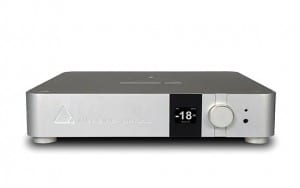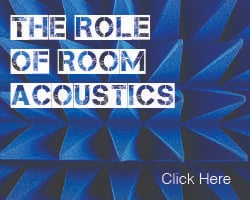Swiss manufacturer Merging Technologies will launch their audiophile D/A converter, NADAC, at the High End Show in Munich on May 14. They will be in Hall 3 on stand J05/K08. 
NADAC stands for Network Attached DAC, and will be delivered in two different versions, stereo and 8-channels. Both variants have ¼” and mini-jack headphone outputs which can be configured to carry a different signal to the main output. Merging Technologies was encouraged to produce NADAC because of the praise their professional D/A converters have received from recording engineers.
Merging is forming a dynamic partnership with a growing number of these content providers, to jointly promote the benefits of the listening to the music “as the artists intended”. Special deals for NADAC purchasers will be announced as they are made available.
NADAC covers PCM formats up to 24-bit/384kHz and DSD up to DSD256. It has AES/EBU and SPDIF digital inputs for use with CD players, CD transports or other devices up to 192kHz. An Ethernet interface is provided for use with computer based digital audio systems for carrying through ASIO on Windows and CoreAudio with DoP on MacOS any resolution up to 384kHz, DXD and DSD256. This uses the RAVENNA protocol that Merging Technologies helped to develop for high sampling rate applications and allows “very robust and accurate transfer of the digital audio data from the computer to NADAC”. The data is stored in a large buffer memory in the NADAC and then clocked out by the unit’s internal clock. This and the RAVENNA protocol’s Precision Time Protocol (IEEE 1588) “eliminates the cable and jitter related problems associated with conventional digital audio interfaces”.
The NADAC’s line outputs are driven by an ESS9008S SABRE Reference Audio D/A IC. This IC has 8 separate D/A converters and in the stereo version of the NADAC, each channel uses 4 D/A converters with the outputs summed. The 8-channel version of the NADAC may also be switched to work as a stereo unit, with the converters configured in the same way.
The NADAC has balanced and unbalanced line outputs; two headphone outputs; a digital volume control and any smart device with a web browser can serve as a remote control.




















































































































































































































You must be logged in to leave a reply.